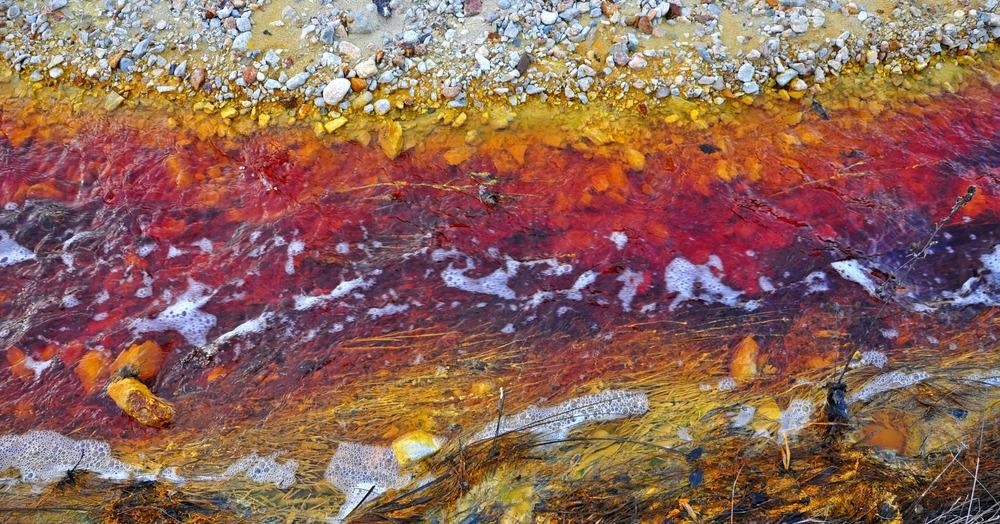Researchers working on the Graphene Flagship Partnering Project 2D-CHEM have developed a new technology for cleaning contaminated water using graphene acid. They have used a new method for synthesizing graphene acid from fluorographene to develop a type of sorbent which is efficient in removing heavy metals from contaminated water.

Image Credit: salajean/Shutterstock.com
Having access to readily available clean water is essential for public health. It is important for drinking and domestic use as well as for sanitation and food production. However, it is estimated by the World Health Organization that by 2025 half of the population of the world will struggle to get access to clean water.
Filtration of Contaminated Water
The main concern regarding water pollution is associated with heavy metals such as lead and cadmium. The heavy metal water contamination is often a result of unregulated activities in the mining and metallurgy industry as well as battery manufacturing.
Such contaminated water would have consequences for aquatic ecosystems and human health. It is therefore important to research inexpensive and efficient ways to filtrate water from heavy metals.
The current most used method to filtrate water from metals is by using organic and inorganic sorbents. The engineering of more efficient sorbents can be achieved using the hybridization of nanoscale inorganic carbon materials to improve the chemical functionalities of the surface of the sorbent.
Many of the sorption technologies used have a limitation posed by the fact that sorbents interact very weakly with metals, which is a challenge for the efficiency of those methods. However, since the current technologies used are not efficient for removing heavy metals, new methods are being researched and suggested.
Graphene Acid Sorbents
One suggested solution to this challenge is using a sorbent with graphene acid. Graphene acid has been proved effective for the removal of toxic metals such as lead and cadmium since it can bind to heavy metals due to its selective chemistry.
As the first two-dimensional material discovered, graphene has revolutionized material science with its exceptional properties and numerous applications in different industries. However, some of its applications in several fields are limited due to its hydrophobic nature and chemical inertness.
Since graphene has low reactivity, very specific conditions are often needed to achieve its derivatives. These specific conditions often pose a limitation to the control over the composition and structure of the derivative.
Graphene Acid from Fluorographene
For years, graphene acid had been difficult to obtain but the researchers from the Graphene Flagship Associated Member Palacký University Olomouc suggested a technique that overcomes this difficulty. They prepared graphene acid from fluorogaphene by replacing fluorine with another element required to produce the relevant graphene derivative.
Fluorographene is stable and can be used to synthesize other graphene derivatives which cannot be directly obtained by graphene functionalization, such as graphene acid.
Fluorographene has attracted the attention of researchers due to its exceptional chemical and physical properties. It is one of the thinnest insulators with a wide bandgap. It also has very high reactivity which facilitates the production of graphene derivatives.
The preparation of graphene acid from florographene requires two steps. Firstly, the fluorographene is defluorinated by removing some of the fluorine atoms to obtain cyanographene, which is hydrophilic and highly conductive. After that, hydrolysis is performed on the cyanographene to give graphene acid as a product.
Advantages of Graphene Acid
One of the advantages that graphene acid offers is that it binds heavy metals with high affinity at high concentrations to reduce them to lower concentrations which are in the acceptable levels for drinking water. Additionally, graphene acid works well as a sorbent even with the presence of ions that naturally occur in drinking water.
Another big advantage of graphene acid-based sorbents is that they can also be used to extract noble metals from water. Metals such as indium and gallium are of limited availability on Earth and having an inexpensive method to extract them while filtrating water would be of interest to many industries, such as jewellery making and pharmaceuticals.
The novel technology that the researchers working on the 2D-CHEM project have developed offers a sustainable and efficient method to remove heavy metals from contaminated water. This significant achievement is essential for finding solutions of the challenges that modern society is facing.
Having a technology that provides clean and easily accessible water for all and improving the clean water supplies is not only beneficial for public health but also to boost the economy of many countries and contribute to reducing poverty.
References and Further Reading
Drinking-water. [online] World Health Organisation. Available at: https://www.who.int/news-room/fact-sheets/detail/drinking-water (Accessed on 14 June 2021)
Chronopoulos, Demetrios D., et al. (2017). Chemistry, properties, and applications of fluorographene. Applied materials today 9. https://doi.org/10.1016/j.apmt.2017.05.004
Bakandritsos, A., et al. (2017). Cyanographene and graphene acid: emerging derivatives enabling high-yield and selective functionalization of graphene. ACS nano. https://doi.org/10.1021/acsnano.6b08449
Kolařík, J., et al. (2021). Carboxylated Graphene for Radical-Assisted Ultra-Trace-Level Water Treatment and Noble Metal Recovery. ACS nano. https://doi.org/10.1021/acsnano.0c10093
Medici, S. et al. (2015). Noble metals in medicine: Latest advances. Coordination Chemistry Reviews. https://doi.org/10.1016/j.ccr.2014.08.002
Disclaimer: The views expressed here are those of the author expressed in their private capacity and do not necessarily represent the views of AZoM.com Limited T/A AZoNetwork the owner and operator of this website. This disclaimer forms part of the Terms and conditions of use of this website.